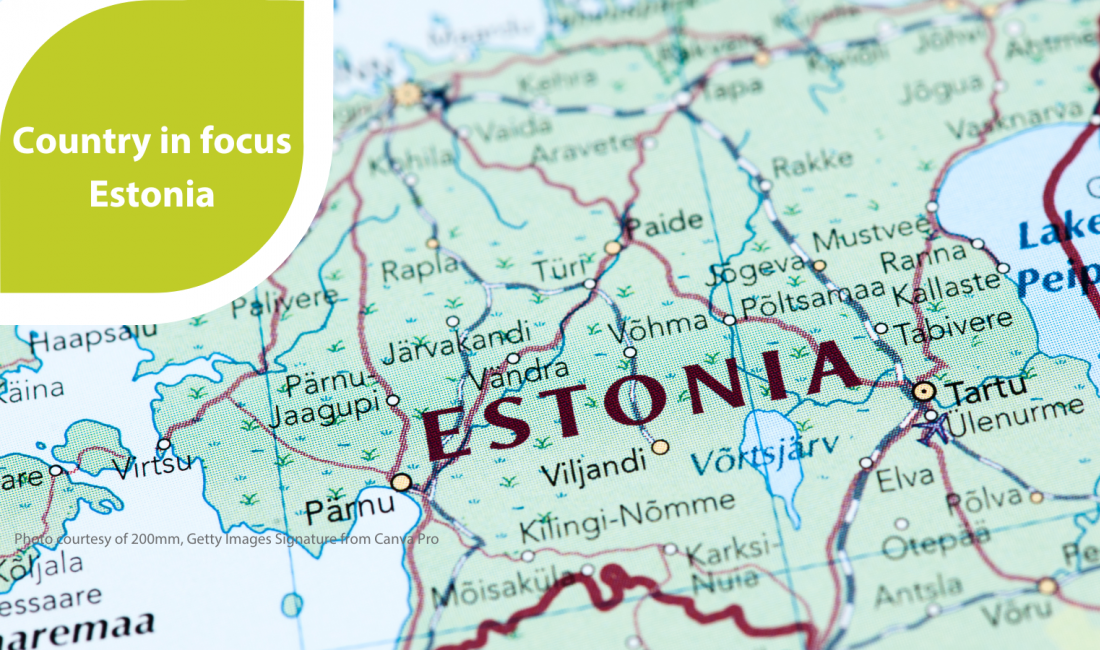In Country in Focus, Democracy International takes a closer look at advances in modern direct democracy and citizen participation worldwide. This interview with Kristina Reinsalu, the Senior Expert on e-Democracy at the e-Governance Academy, discovers culture of political participation and democracy in Estonia.
• What are the political traditions and participation culture in Estonia?
Estonia was under Soviet occupation for 60 years and we regained our independence 30 years ago. Obviously, we cannot talk about any civic participation traditions during that time, but we kept some civic movements which I believe boosted the participation when Estonia regained independence. In 1991 Estonia liberated itself from the occupation in a peaceful Singing Revolution, showcasing very strong civic activism. It was a very nice time because people were so ready to do whatever it took for their independence. Everybody was happy.
Once independence was established and we started to have our own government, people were very active and happy to contribute. Unfortunately, at that time, there were no technical or digital solutions to be active, but generally, civic activism was booming. Another very important thing for the future developments of Estonian civil society was that at that time we already had open-minded and well-educated activists who were leading the civil society. It was quite unique at that time at least in the Eastern part of Europe, and these individuals were setting the tone for civil society organisations.
At the same time, people had a lot of illusions, in particular, illusions that everybody would be participating in governing the country. In Estonia, as in other Eastern countries, after the period of liberation and initial illusionment, the activism calmed down.
There have been ups and downs when we talk about civil society and also digital activism. Generally, believe that civic activism and political culture have developed enormously during the last years, even though one could expect even more initiatives and more opportunities for citizens to e-participation.
At the moment, I would characterise civil society rather with some sense of protest. In all different means, economically due to rising taxation issues, and mentally because of the war in Ukraine which deeply affects us, we are going through tough times. There is also a lot of criticism towards the government. At least on the national level, the general disappointment keeps the motivation to participate (in a positive way) quite low.
On the level of municipalities, I believe, many things are different. The municipal and city governments have realised that it is much more productive to engage people in the process of decision-making early on rather than start fighting with citizens afterwards. On the local level, the trend is quite the opposite from the national one, people do care and do participate. The inclusion of a diverse crowd of citizens in the decision-making from the very beginning of the process leads to more trust and better decisions. And I think now the local governments have realised that.
• You already mentioned it briefly, but what are the implications of the full-scale war in Ukraine on Estonian activism?
When the full-scale war started in 2022, the population of Estonia was very mobilised. We were among the countries with the biggest number of hosted Ukrainians compared to the population, we donated a lot. It was so unusual for me to see, as we as a nation are used to having our own space, being maybe a bit introverted. But this war felt so personal, so much like our own tragedy, that in a way it united Estonians a lot. Maybe it happened partly out of fear and understanding that Ukraine is fighting for all of us, Estonia and Europe.
Our organisation, e-Governance Academy, is also deeply affected by this war. We actually have an office in the centre of Kyiv and we have recruited more than 40 Ukrainians who work as part of our team. We regularly have meetings with Ukrainians attending and talking about yet another sleepless night with air raid alarms and missiles.
Now, as the time has passed, I think the society is more polarised. When so many people are struggling economically in Estonia, it is easier for some politicians to manipulate the ideas of support. Why should we help somebody else if we are struggling here so much?- they ask. For politicians worldwide, it is getting harder and harder to make each decision about helping Ukraine.
It is very sad to see how much political polarisation and political struggle is happening now. Now we need to be united more than ever when Europe is facing a big danger.
• 2024 has the European elections in June, what are the landscape and predictions for Estonian preferences etc?
The candidates for the EU elections know very well that citizens care less about the affairs on the European level. Their campaigns have not yet started, but they are predicted to focus more on the national agenda and in that sense be similar to national election campaigns. Unfortunately, the campaigning based on the European focus does not speak to the average citizens due to lack of interest and hence would not be successful. I think the final selection of Members of the European Parliament (MEPs) from Estonia will be based on promises that have more to do with local and national politics and that cannot be implemented from the position of the MEPs.
This surely doesn't necessarily give the best result in the sense of having the best country representatives on the European level. People who might be competent nationally or locally are not necessarily good European parliamentarians and vice versa. We have some politicians who have been excellent in their term in the European Parliament but not quite as successful domestically. Saying this I'm actually referring to our current Prime Minister, for instance.
• Estonia has quite a successful digital petitioning tool. Can you talk a little about that and explain the process itself, what are the key factors for its success and what are the limitations?
When it comes to digital engagement, quite early on, already in 2001, Estonia had the first digital participation platform. It was revolutionary at that time, maybe even too revolutionary because the concept already was to engage citizens in co-creating policies. Everyone was able to propose new legal acts or amendments for the existing one, it had a possibility of commenting on the proposal, and the proposals that reached enough signatures were going directly to respective public authority. The idea was wonderful and even nowadays we hardly have such platforms that are well-functioning. Back then, it was 2001, it was probably too early to have such a platform. Another aspect is that this platform was not moderated, which is very characteristic of the early developments. It was not moderated because at that time Estonia did not have yet well-formed civil society organisations.
However, now there is a new Citizen Initiative Portal (https://rahvaalgatus.ee/). It has options for both national and local petitioning, and one has to collect 1,000 digital signatures for the national level and the signatures of one per cent of the residents of the area for the local level. If the necessary number of signatures is collected, the proposal is submitted to the Parliament which has to process the petition. Especially at the local level such petitioning is very actively used because there, people see a clear impact of their actions. Even if in the end the decision is not what the petitioners were requesting, in many municipalities, the existence of these petitions has started a dialogue between the local governments and the community.
Sure, we can argue that such interruption is too late and it is better to establish the dialogue from the very beginning, but the impact of even such delayed conversation is very clear. In some local cases, the impact of petitioning went broader than just the topic of legislation. It has influenced the local governments and convinced them to start communication with the public earlier in the decision-making process and plan the citizens’ engagement much better.
• The only direct democracy tools that result in a referendum are the authority-initiated ones. At the same time, Estonia has quite a successful digital petitioning tool. Do you think there is a demand from citizens to have more binding influence such as citizens’ initiatives?
On the national level the Estonian petitioning tool, the lack of a binding impact has partially cut down the level of enthusiasm about the tool. This is why also in some cases the initiative groups of the petitions that collected enough signatures started to combine this instrument with other things, such as lobbying. Some initiators were lobbying for their initiative in the Parliament, used a lot of marketing and communication, and used many opportunities for open meetings of different committees. Such petitions were adopted as a law.
But if we speak about the demand for more binding tools, I think this coin has two sides. People having a direct impact and final say has obvious advantages, but I can also see the political powers who would do whatever it takes to manipulate the population or the lack of time or possibilities for people to dive deeper into the topic of each such binding initiative. At the moment, I see the risks of implementing such tools on the national level in Estonia.
On the local level though maybe cautious introduction of such instruments could be a good start. Our organisation will be soon hosting a local citizens’ assembly of the topic of food sustainability in City of Tartu. While preparing it, I had a very hard time finding the right wording to promise any outcomes for our participants. Of course, I would want to promise really tangible and clear promise of the outcome. However, the city officials are very cautious in promising that such proposals of the assemblies will be a part of the action plan of the local authority since these are political decisions. If the public authorities are not giving away part of their power, we cannot speak about really participatory governance.
• What are the main challenges for democracy in Estonia at the moment and what are the hopes for future democratic developments?
The big challenge is to unify again the polarised society, and now the ball is in the hands of the political powers. Even though a lot of people surely understand that the hard decisions do not have simple solutions, the way these decisions were communicated (or not timely communicated) has polarised society to the extent it has probably never been polarised before. The trust in our government I think was the key of our successful democratisation and digital transformation. We definitely need to rebuild this trust.




